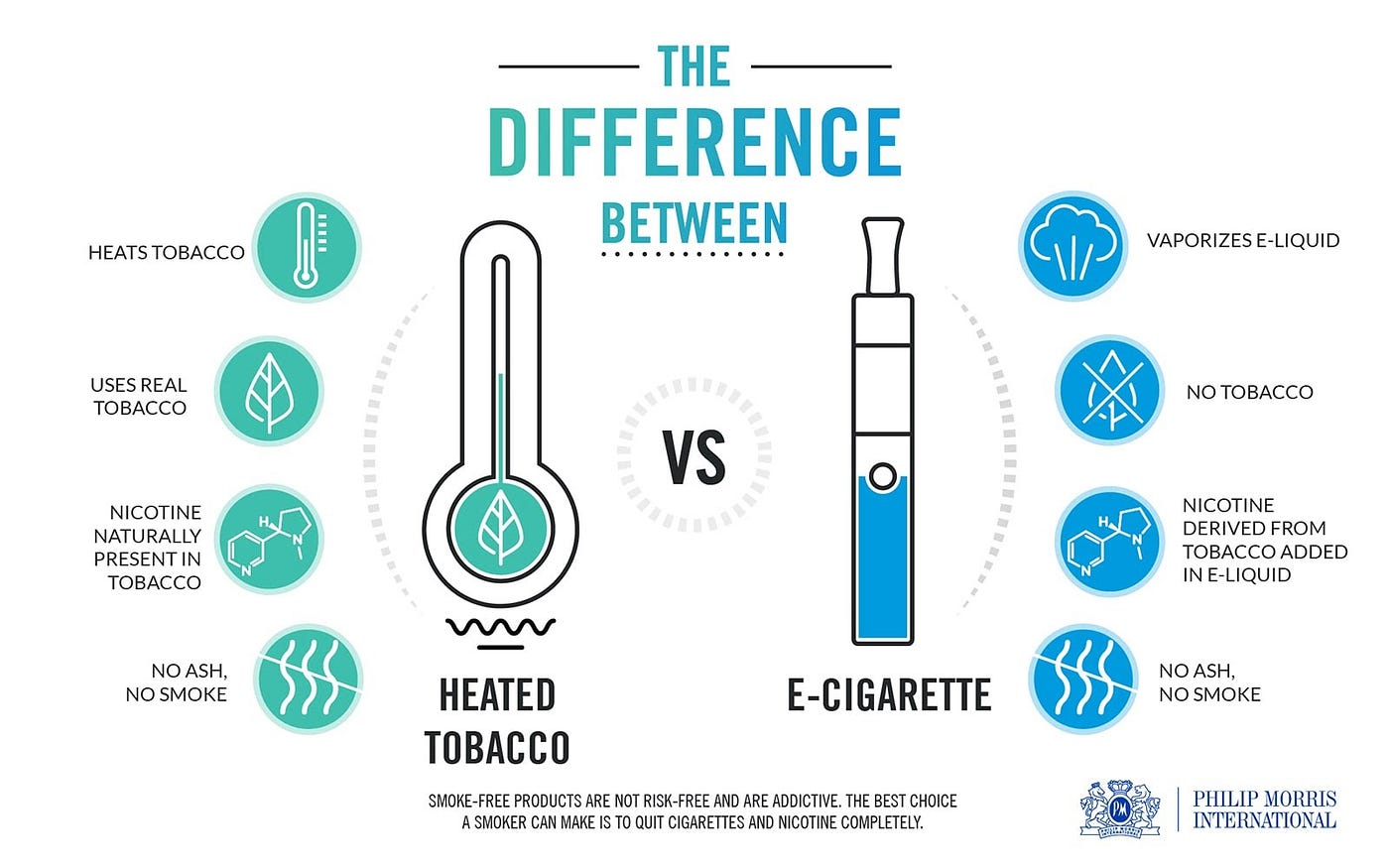Electronic cigarettes (e-cigarettes or vapes) and regular (combustible) cigarettes differ significantly in their mechanism, contents, and health implications.
Electronic Cigarettes
E-cigarettes are battery-operated devices that heat a liquid (e-liquid or vape juice) to create an aerosol, which is then inhaled by the user. This process is often referred to as “vaping.”

Key Characteristics:
- Mechanism: Heating a liquid (typically containing nicotine, flavorings, propylene glycol, and vegetable glycerin) to produce an aerosol. No combustion occurs.
- Contents: E-liquids vary. They can contain nicotine in various concentrations (including nicotine-free options), flavorings, and other chemicals. The aerosol contains these substances, potentially including harmful and potentially harmful constituents (HPHCs), though generally fewer and at lower levels than in cigarette smoke.
- Byproducts: Aerosol, not smoke. Does not produce tar or carbon monoxide, which are major harmful components of cigarette smoke.
- Regulation & Safety: Regulation varies by jurisdiction. Long-term health effects are still being studied, but they are generally considered less harmful than regular cigarettes for existing adult smokers who switch completely. Concerns exist regarding youth uptake and the safety of some e-liquid ingredients and heating coil materials.
Regular Cigarettes
Regular cigarettes consist of cured and finely cut tobacco leaves wrapped in paper. They are lit, and the smoke produced by the burning tobacco is inhaled.
Key Characteristics:
- Mechanism: Combustion of tobacco. This burning process releases thousands of chemicals.
- Contents: Tobacco, paper, and often chemical additives. The smoke contains nicotine (a highly addictive substance), tar (a sticky residue containing many carcinogens), carbon monoxide, and over 7,000 other chemicals, including at least 70 known carcinogens.
- Byproducts: Smoke, ash, and cigarette butts. Secondhand smoke is also a significant health hazard to non-smokers.
- Health Impact: Extensively documented as a leading cause of preventable death and disease, including various cancers, heart disease, stroke, lung diseases (like COPD and emphysema), and other health problems.
Core Differences Summarized
Understanding the fundamental distinctions is crucial:
- Combustion vs. Aerosolization: Regular cigarettes burn tobacco, producing smoke. E-cigarettes heat a liquid to produce an aerosol. The absence of combustion in e-cigarettes means no tar and significantly lower levels of many toxicants found in cigarette smoke.
- Chemical Profile: Cigarette smoke contains thousands of chemicals, many of which are highly toxic and carcinogenic. E-cigarette aerosol contains fewer chemicals, but is not emission-free and can contain nicotine and other potentially harmful substances.
- Harm Potential: While not risk-free, current evidence suggests that e-cigarettes are likely significantly less harmful than regular cigarettes for existing smokers who switch completely. Regular cigarettes are unequivocally linked to severe disease and premature death.
- Nicotine Delivery: Both can deliver nicotine effectively, leading to addiction. E-cigarettes offer variable nicotine levels, including nicotine-free options, whereas nicotine content in regular cigarettes is relatively standard.
- Odor & Residue: E-cigarette aerosol typically has a less offensive and less persistent odor than cigarette smoke and does not leave the same tar residue.
Important Note: The safest option is to not use any tobacco or nicotine products. Non-smokers, young people, and pregnant women should not use e-cigarettes or regular cigarettes.










